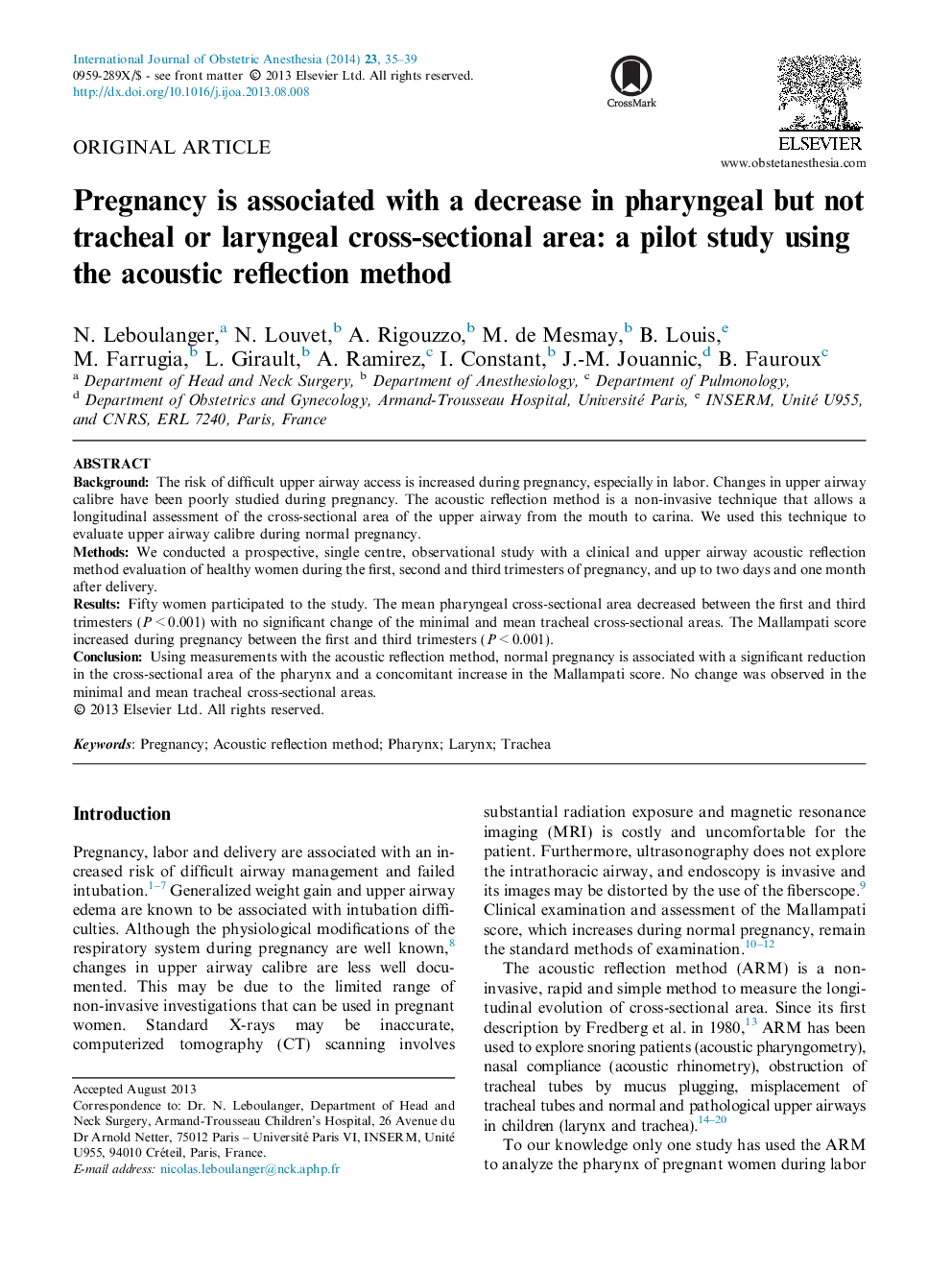| Article ID | Journal | Published Year | Pages | File Type |
|---|---|---|---|---|
| 2757777 | International Journal of Obstetric Anesthesia | 2014 | 5 Pages |
BackgroundThe risk of difficult upper airway access is increased during pregnancy, especially in labor. Changes in upper airway calibre have been poorly studied during pregnancy. The acoustic reflection method is a non-invasive technique that allows a longitudinal assessment of the cross-sectional area of the upper airway from the mouth to carina. We used this technique to evaluate upper airway calibre during normal pregnancy.MethodsWe conducted a prospective, single centre, observational study with a clinical and upper airway acoustic reflection method evaluation of healthy women during the first, second and third trimesters of pregnancy, and up to two days and one month after delivery.ResultsFifty women participated to the study. The mean pharyngeal cross-sectional area decreased between the first and third trimesters (P < 0.001) with no significant change of the minimal and mean tracheal cross-sectional areas. The Mallampati score increased during pregnancy between the first and third trimesters (P < 0.001).ConclusionUsing measurements with the acoustic reflection method, normal pregnancy is associated with a significant reduction in the cross-sectional area of the pharynx and a concomitant increase in the Mallampati score. No change was observed in the minimal and mean tracheal cross-sectional areas.
